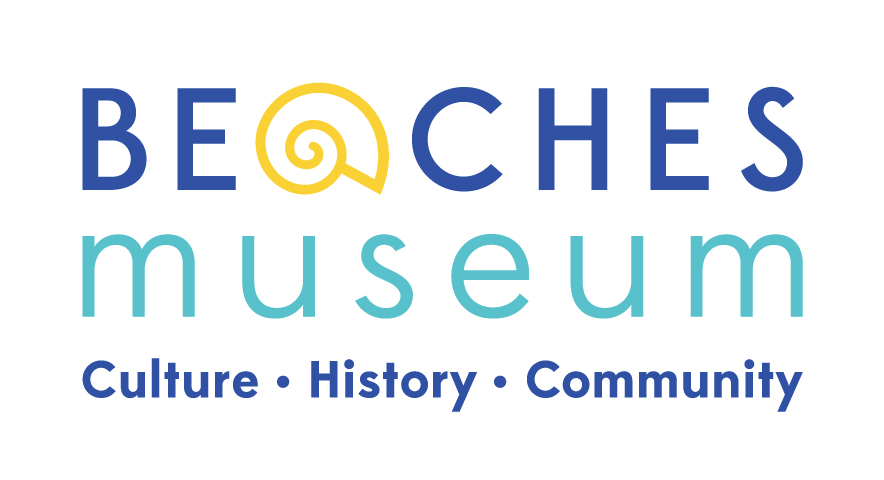The St. Johns River Ferry
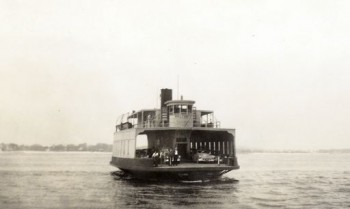 The St. Johns River Ferry
The St. Johns River Ferry
This article is an excerpt from the 2016 exhibit, Mayport Village: On the River of Change.
Locals and visitors have been crossing the St. Johns River between Fort George Island and Mayport Village for centuries. In the 1600s, Spanish missionaries relied upon those they wished to convert, the Timucua Indians, to provide transport via dugout canoe. In the post-Civil War years, residents, travelers, tradesmen and farmers often crossed the river by way of privately-owned flatboat ferries.
The post-World War II boom in automobile tourism and federally-mandated highway extensions led to a dramatic increase in traffic to Northeast Florida. State and local officials recognized that an uninterrupted coastal highway would not only bolster the economies of seaside communities from Fernandina Beach to St. Augustine but also ease traffic on inland roadways. More than seventeen miles of new highway and a formal ferry service connecting Fort George Island to Mayport Village was required to realize this goal.
On September 15, 1950, the St. Johns River Ferry Service opened to the public. The ferry slips were built 2.5 miles inland from the mouth of the St. Johns River. Inaugural ships, the Reliance and the Monadnock, carried passengers and cars along the 0.9 mile water route connecting North and South State Road A1A.
Billed as “the gateway to A1A,” this newly-created stretch of highway enabled motorists to bypass Jacksonville via the St. Johns River Ferry Service. A marketing campaign invited tourists to travel the “Buccaneer Trail” and “ride through history on Florida A1A.” Suggested stops along the Buccaneer Trail included Fort Clinch, Kingsley Plantation, and Mayport Village for its French Huguenot history and “unsurpassed” seafood supported by the local shrimping fleet.
Locals have fought the closure of the St. Johns River Ferry Service in recent years in the face of state and city budget cuts. In 2016, community advocates and officials successfully secured funding for guaranteed operations for the next two decades. The ferryboat, Jean Ribault–built in 1996–currently supports the St.Johns River Ferry Service with a carrying capacity of 40 cars and 206 passengers. Boasting membership to the East Coast Greenway, the Ferry is now a vital link in a 3,000 mile-long trail system stretching from Maine to South Florida.
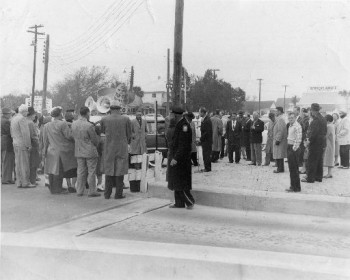 Residents gather for the official opening of the St. Johns River Ferry Service. September 16, 1950.
Residents gather for the official opening of the St. Johns River Ferry Service. September 16, 1950.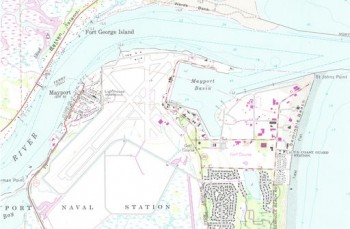 “Mayport Topographical Map, 1964 excerpt”–Excerpt from a 1964 topographical map of the area. The ferry path is traced out on the left.
“Mayport Topographical Map, 1964 excerpt”–Excerpt from a 1964 topographical map of the area. The ferry path is traced out on the left.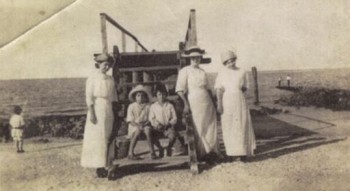 Early Mayport Village residents, Ethel Spaulding Tuttle (left) and Beatrice Sallas Tuttle (far right), waiting for a ferry. Circa 1900.
Early Mayport Village residents, Ethel Spaulding Tuttle (left) and Beatrice Sallas Tuttle (far right), waiting for a ferry. Circa 1900.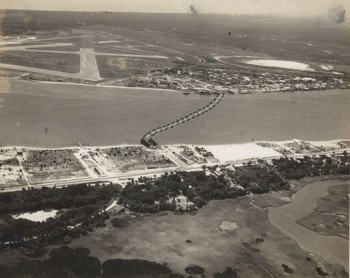 Aerial view of the proposed St. Johns River Ferry Service route from July 1950.
Aerial view of the proposed St. Johns River Ferry Service route from July 1950.
